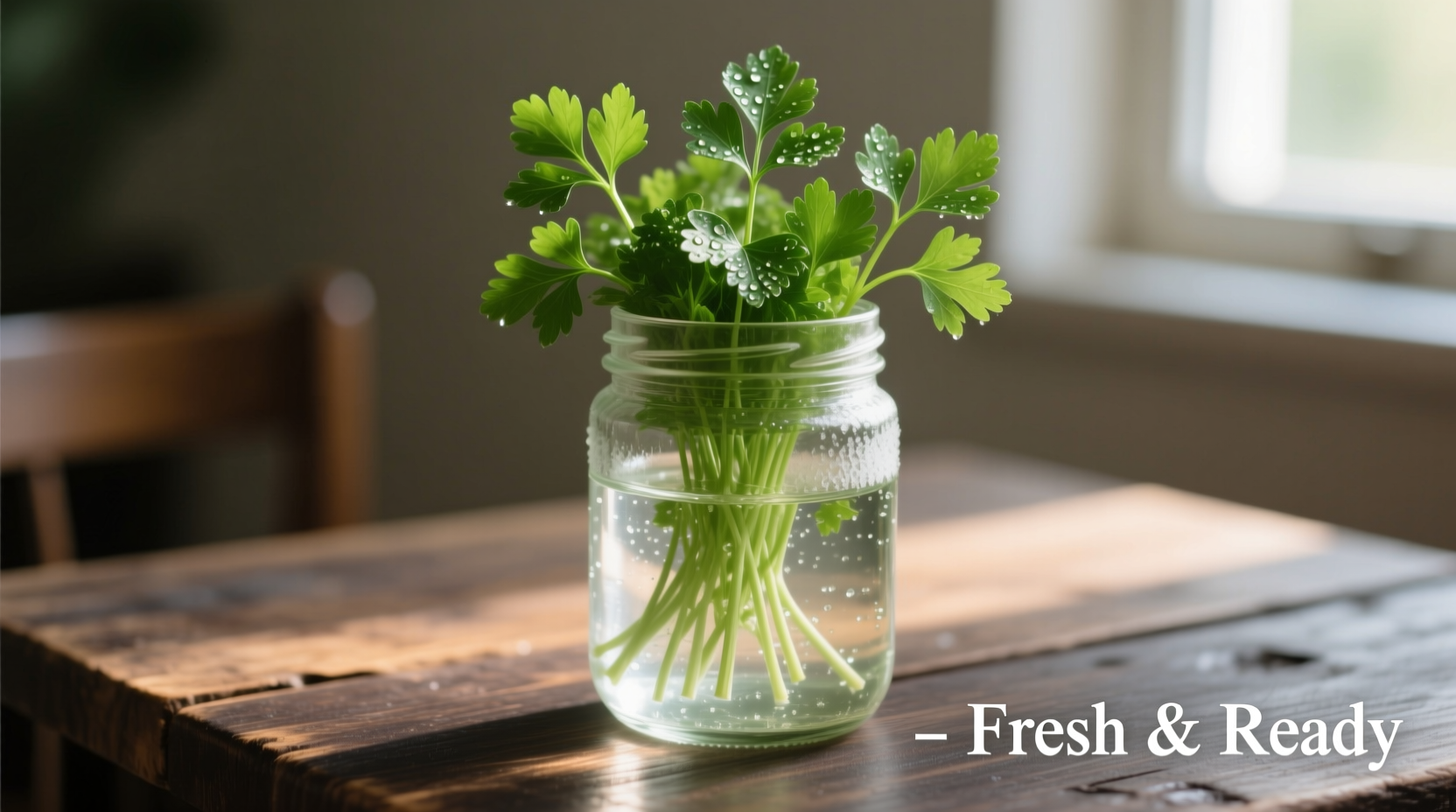Nothing ruins a vibrant tabbouleh or fresh chimichurri faster than limp, yellowing parsley. As a chef who's worked with herbs daily for over 15 years, I've tested every storage method imaginable. The good news? With proper technique, you can extend your parsley's life by 10 days compared to tossing it straight into the crisper drawer.
Why Proper Parsley Storage Matters
Parsley isn't just a garnish—it's packed with vitamins K and C, plus potent antioxidants that degrade as the herb wilts. According to USDA food preservation research, herbs stored at optimal conditions retain 30% more nutrients after 7 days compared to improperly stored counterparts. When you master storage, you're not just saving money—you're maximizing nutritional value.
The Water Method: Professional Results at Home
This technique mimics how florists keep cut flowers fresh and works for most leafy herbs:
- Trim ½ inch from the bottom of stems with sharp scissors
- Place in a glass or jar with 1-2 inches of cool water
- Cover loosely with a plastic produce bag
- Store in the main refrigerator compartment (not the door)
- Change water every 2-3 days
This method maintains optimal humidity (90-95%) while providing hydration—critical for curly and flat-leaf varieties alike. University of California's Agricultural Extension confirms this approach preserves cellular structure better than alternatives.

When the Water Method Isn't Practical
For those short on fridge space or storing smaller quantities, these alternatives work well:
Moist Paper Towel Technique
Wrap stems in a slightly damp paper towel, place in a partially open container, and refrigerate. This works best for pre-washed bunches and lasts 5-7 days. The key is slight moisture—too wet encourages mold.
Freezing for Long-Term Use
For sauces and cooked dishes:
- Chop leaves finely
- Portion into ice cube trays
- Cover with olive oil or water
- Freeze, then transfer to airtight bags
This preserves flavor for 4-6 months. Note: frozen parsley loses texture but retains full flavor for cooking.
Parsley Storage Comparison
| Method | Shelf Life | Best For | Nutrient Retention* |
|---|---|---|---|
| Water + bag | 10-14 days | Raw applications | 90% |
| Moist paper towel | 5-7 days | Short-term use | 75% |
| Freezing in oil | 4-6 months | Cooked dishes | 85% |
| Original packaging | 3-4 days | Immediate use | 60% |
*Based on vitamin C retention studies from Cornell Food Science Department
Common Storage Mistakes to Avoid
- Skipping stem trimming: Cut ends seal without fresh cuts
- Using airtight containers: Traps ethylene gas accelerating decay
- Storing near ethylene producers: Keep away from apples, bananas, avocados
- Washing before storage: Excess moisture promotes mold (wash only before use)
How to Tell When Parsley Has Gone Bad
Discard parsley showing these signs:
- Black or slimy spots (not just yellowing)
- Mushy stems that bend easily
- Sour or ammonia-like odor
- Excessive leaf drop when handled
Slightly wilted parsley can often be revived by soaking in ice water for 15 minutes—a trick I've used countless times in professional kitchens.
Maximizing Your Parsley's Lifespan: Pro Tips
- Store away from refrigerator fans which cause premature drying
- Keep stems submerged but leaves above water line
- For flat-leaf varieties, mist leaves lightly every 3 days
- Remove any yellowing leaves immediately to prevent spread











 浙公网安备
33010002000092号
浙公网安备
33010002000092号 浙B2-20120091-4
浙B2-20120091-4